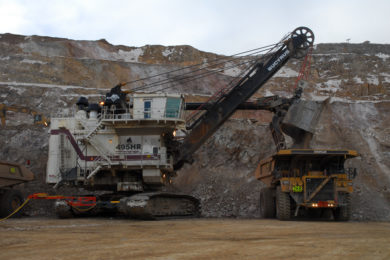In keeping with the Department of the Interior’s priority of providing opportunities for the sustainable and responsible development of the nation’s natural resources, the Bureau of Land Management Ely District says it is preparing an environmental impact statement (EIS) analysing a proposal to expand the Robinson Copper Mine in Nevada, which is operated by Robinson Nevada Mining Company and 100% owned by Poland’s mining major KGHM Polska Miedź SA. The proposed expansion would extend the life of the mine, which is located on private and public lands about seven miles west of Ely, Nevada, until 2028.
The publication of the Notice of Intent in the Federal Register on May 28 initiated a 30-day public scoping period that concludes June 29. “The BLM supports the sustainable and responsible development of the Nation’s energy and natural resources and strives to be a good neighbor in the communities we serve. We know how important mining is to the people and economy of Nevada, which is why we welcome public review of this proposal as we begin the process of preparing an EIS,” said BLM Nevada State Director Jon Raby.
The Robinson Mine is considered by the US Geological Survey to be one of the largest porphyry-related mining operations in the world and employs more than 600 workers. In addition to copper, Robinson now also produces molybdenum, gold, and some silver. Mining in the Robinson District dates to 1868, when early mining activity in the area centered on small deposits of precious metals. Mining for precious metals declined near the turn of the century and by the early 1900s, mining in the district focused almost exclusively on copper. Large scale copper mining began at the Robinson mine in 1908 and continued until 1999, when it was closed due to low copper prices. Since being reopened in 2004, the mine has produced an average of approximately 125 Mlbs of copper per year.
Robinson Nevada Mining Company is proposing to amend the Robinson Project Plan of Operations. The amendment would authorise KGHM Robinson to extend the mine life to 2028 through authorisation of the following actions: resume mining in the Liberty Pit, construct the new King Waste Rock Dump south of the Liberty and Ruth Pits, and expand storage capacity at the Giroux Wash Tailings Storage Facility. The EIS will analyse an alternative to resume waste rock placement on the North Tripp Waste Rock Dump, requiring North Tripp Waste Rock Dump expansion.
The proposed activities would result in a total increase of approximately 1,227 acres of surface disturbance within the Project Area Boundary for a new end of mine life total surface disturbance of 10,115 acres. The proposed increase would comprise 246 acres of new disturbance on private land and 981 acres of new disturbance located on public lands.
To maximise the opportunity for public input on this project while prioritising the health and safety of BLM employees and the interested public, BLM will host on-line virtual public scoping meetings to provide information and gather input on the Robinson Mine Expansion and Resource Management Plan Amendment project. The date(s) and information on how to login and participate in these virtual scoping meetings will be announced at least 15 days in advance through local media and on the BLM website at https://go.usa.gov/xvYad.
The EIS will also analyse reclassification of the entire Plan of Operations area for Robinson Mine from Visual Resource Management (VRM) Class II and Class III to potentially VRM Class IV. This reclassification, if approved, would allow for significant modifications in the character of the landscape as part of the mine’s plan of operations. The BLM is responsible for managing the public lands for multiple uses, and for ensuring that the scenic values of these public lands are considered when providing for various uses. BLM’s Visual Resource Management (VRM) system involves inventorying scenic values and establishing management objectives for those values through the resource management planning process.
The purpose of the public scoping process is to determine relevant resource concerns that will influence the scope of the environmental analysis, including alternatives, and guide the process for developing the EIS. At present, the BLM has identified the following: geology and mineral resources, water resources, soils and reclamation, wildlife (including special status species), vegetation (including special status species), cultural resources, recreation, socioeconomics, environmental justice, visual resources, and greenhouse gas emissions.










